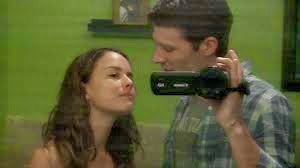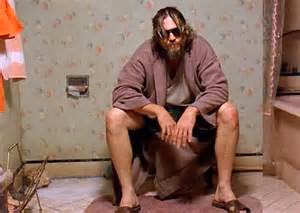 |
| A 1947 ad for the Victory Theater. Admission price: a whopping 40 cents |
Located on the corner of Main and Jefferson Streets, it wasn't as grand and opulent as nearby Portland's Bagdad or Broadway (which sometimes hosted gala, star-studded movie premieres). Compared to those immaculate palaces, the Victory was relatively small and humble, though the auditorium itself was one of the last new cinemas in the area to include a balcony. The theater's exterior was rather plain and unremarkable, its most noteworthy feature being the blazing-red neon V at the center of the marquee, proudly lighting up the intersection. A bit more care was given to its interior design…an art-deco architectural style popular during the previous two decades.
This was back when communities surrounding larger cities still maintained their own small-town identity, before urban expansion began erasing boundaries and stuffing the spaces between with as many businesses, schools, apartments, malls and factories as we could squeeze in. Today, nothing separates Portland from its outlining communities…it’s a constant barrage of traffic lights, convenience stores, offices, malls, industrial parks, shopping centers, gas stations, neighborhoods and strip clubs.
But in 1942, Milwaukie was still relatively isolated, so the grand opening of its very first movie theater was a big deal indeed. Being that this was shortly after the beginning of America’s involvement in World War II (and patriotism was at an all-time high), the place was aptly named, and effectively exploited in a front page article of The Milwaukie Review:
The new Victory is keeping with the times, as its decorations carry the victory motif throughout, even the usherettes wearing uniforms that sport the red, white and blue. For the grand opening Wednesday, the building was decorated with buntings and the flags of the United Nations were flying from the marquee. Up and down Main Street, welcome banners and streamers were strung across the street.
The author of this article went on to write about “youngsters who are grateful for the chance to attend a show at home instead of having to go into the big burg to see the flickers.” Sounds a bit Barney Fife, but probably reflective of Milwaukie's small town pride at the time.
 |
| The Victory Theater in 1950, during Milwaukie's Centennial celebration |
The city of Milwaukie had a grand little theater of its own, meaning one didn’t need to make the trek into Portland to catch the latest Hollywood had to offer. At the same time, the Victory was still community oriented, hosting local talent shows, civics groups and guest lecturers, not to mention being the home of the annual Miss Milwaukie Pageant for many years.
The Victory was first part of a small chain called Suburban Theaters, then Neighborhood Theaters, then Community Theaters, actual ownership of the place changing hands several times over the years. But the Victory always did big business because, for decades, it was Milwaukie's only theater.
Then, in 1966, Harry Moyer's son (entrepreneur and former Golden Glove boxer, Tom Moyer) built the Eastgate, the very first multi-screen theater in the Portland area. While totally lacking the visual opulence of Portland's long-established cinemas (some of which were beginning to show their age), the Eastgate was bigger, more luxurious, more technically advanced and, most ominously, located in the suburbs where tiny theaters like the Victory thrived. In the ensuing decade, many Moyer multiplexes followed, including the Southgate, a boxy quad cinema erected a mere mile from the aging Victory, and where The Towering Inferno (one of the 70's biggest films) had its Portland premiere in 1974.
All the while, the Victory slowly became a run-down relic, a dirty, puke-colored shadow of its former self. Unlike Portland's beloved Bagdad, with its still-hip location and neon marquee shining as brightly as it did in the 20s, the Victory was a now squalid dump which sometimes showed porn films back when the genre was flirting with mainstream acceptance.
 |
| The early 1970s. Now called Cinema V, this was around the time the place became my hangout of choice. |
Around 1973, it was purchased by the Metro Cinemas chain and rechristened Cinema V. With it’s permanently sticky floors and once-plush seats now matted and frayed from thousands of butts over the years, Cinema V became a dumping ground for blockbusters after they enjoyed their initial theatrical runs before being sold to TV.
The theater also showed matinees of kid-friendly pictures as part of a summer movie program, where parents could purchase a booklet of tickets and drop-off their offspring to catch movies most of the adult world had already forgotten. It was around this time my family settled in Milwaukie and I was first exposed to Forbidden Planet, The Incredible Shrinking Man, The Green Slime, old Disney movies like The Love Bug and Blackbeard's Ghost, not to mention a plethora of Godzilla flicks. It was here that I fell in total love with, not just movies, but the act of going to the movies and the theaters where they played. While most kids built spaceships and weapons with their Legos, I constructed movie theaters, complete with seats, screens, balconies, box offices, concession stands and marquees. When the Sunday Oregonion arrived at our doorstep each week, I'd grab the entertainment section while scarfing down Cheerios to gaze in awe at the big, glorious ads showing what was currently playing, and the wonders soon to come. I often clipped-out the more impressive ads to pin on the bulletin board in my bedroom, whether or not the movie was actually any good (Beyond the Door may have been a cheap Italian Exorcist knock-off, but man, was that ad scary!).
Mom and Dad would occasionally take my sister and I to the Southgate for a family night out, but when money was tight, Cinema V came in handy because they could drop me off while shopping or attending a Portland Buckaroos hockey game. Because of its relative proximity to my house, my friends and I eventually started biking there ourselves once we were old enough.
For the longest time, the admission price was only 69 cents, and that was for two movies! 69 CENTS was perpetually plastered on its cracked and weathered marquee at least five times bigger than the movie titles themselves (which were almost always missing a letter or two). In fact, my friends and I had been calling the place Cinema 69 for years (snickering like Beavis & Butthead once we eventually learned the connotation of that number).
The popcorn from the snack bar was gummy and stale, the Milk Duds were rock-hard and likely left over from when the place was still called the Victory. The most appealing beverage choice was RC Cola, which always tasted flat, closer to syrup than real soda. But everything was just as cheap as the price of admission, so I never complained.
Even though the place was old, dank and had a big slit in the screen hastily repaired with masking tape, it was pretty awesome to be able to catch a movie just by rummaging through sofa cushions for loose change. Best of all, Cinema 69 never checked IDs (at least when Herb, a congenial old man, was manning the box office, which was pretty-much all the time). Hence, I was exposed to a lot of R-rated wonders before I was even able to drive.
When inflation reared its ugly head, the admission price eventually jumped from 69 cents to 99 cents, but I have to assume this pricing decision was based on the fact they simply turned the 6 upside-down and commenced with business as usual.
| The old stomping ground, expanded to a tri-plex in the early 1980s and renamed Milwaukie Cinemas |
God bless the second-run theater, an endangered species nowadays. There aren’t many of them around anymore. As it becomes cheaper and more convenient to watch movies at home, one by one, these theaters are dropping like flies. Sure, some still exist in major cities, but mostly after rechristening themselves theater-pubs, where hipsters congregate to pretend they enjoy microbrews that taste like socks, or cinema-arcades to groom young kids for a life of gambling addiction. Even the old Cinema 69 is now one of these, it's once-spacious auditorium chopped in half to make room for Skee-Ball and Whack-A-Mole. Movies alone are seldom enough to keep these places in business, even with an admission price less than a glorified milkshake from Starbucks. There are still a few second-run cinemas left which offer just movies, but I think it is just a matter of time before they are all gone. That’ll be a sad day.
As a lifelong movie fanatic, Cinema 69 was an important part of my formative years, and I sort-of grew up there. Not only was it my personal hang-out of choice, it was where I saw most of the movies, classic and not-so-classic, that are still some of my all-time (or sentimental) favorites, and where I was exposed to countless actors, actresses and directors who make movies such a wonderful escape for me. It was at this dilapidated palace that I developed boyhood crushes on Ann-Margret and Faye Dunaway, and inspired to try and be as impossibly cool as Charlton Heston, James Caan and Steve McQueen.
Cinema 69 provided my first education in sex (on and off screen), terrorism, good vs. evil, creative uses of the F-word, the consequences of getting shitfaced and why one should never sit directly under a balcony. It’s also where I discovered giant spiders, boobs, demonic cars, zombies, grown-up cartoons, how to play Rollerball and the joy of watching shit blow up.
 |
| The old Cinema 69 today, now part of the Wunderland chain of cinema-arcades. |
Times marches on, of course. Friends come and go. Places we once haunted get crushed in the gears of time. I'm certain old Herb (who looked 99 years old back in the 70s) has since gone to that great box office in the sky. Ironically, the old Victory still marks the corner of Main and Jefferson, long after 20 screen megaplexes rendered the Southgate and Eastgate obsolete (the former was unceremoniously demolished, the latter became a Slavic church). While I’m personally happy it’s still showing lots of second-run movies at a reasonable price ($3.00 today), it isn’t quite the Cinema 69 in which I grew up. The original auditorium is full of teenagers playing Dance Dance Revolution, and the old balcony is a storage room. Movies are now regulated to the two 100-seat theaters that were added back in the early 80s, during which time the old Victory was rechristened yet-again as Milwaukie Cinemas.
While I truly miss the double features, matted seats, stale popcorn and ol' Herb's brown-toothed smoker's grin, at least my beloved old hangout is still there, which is more than I can say for most of the other time-ravaged relics from my youth.








.png)
























